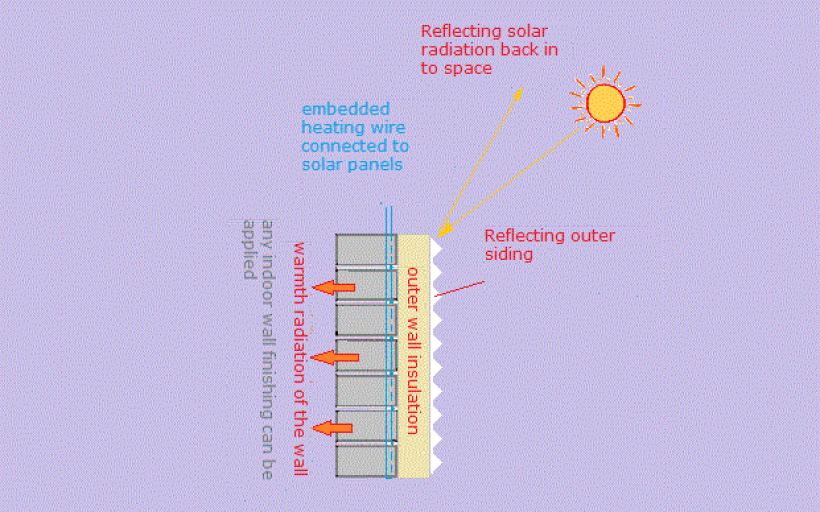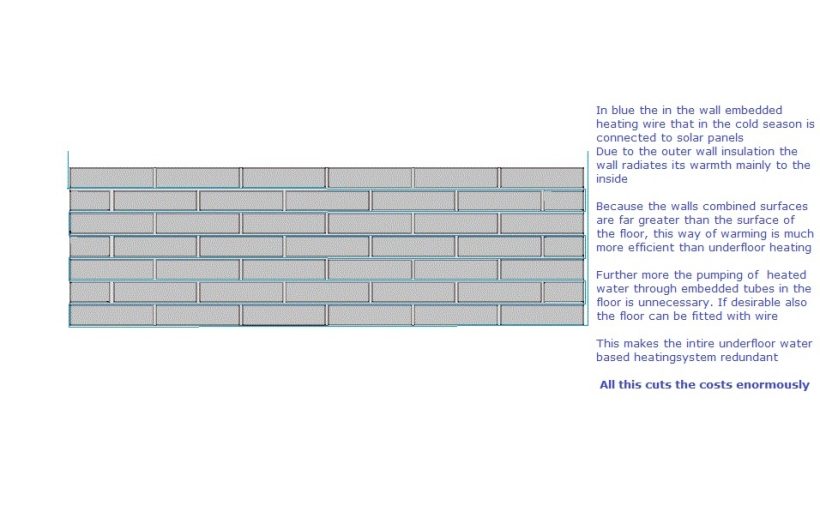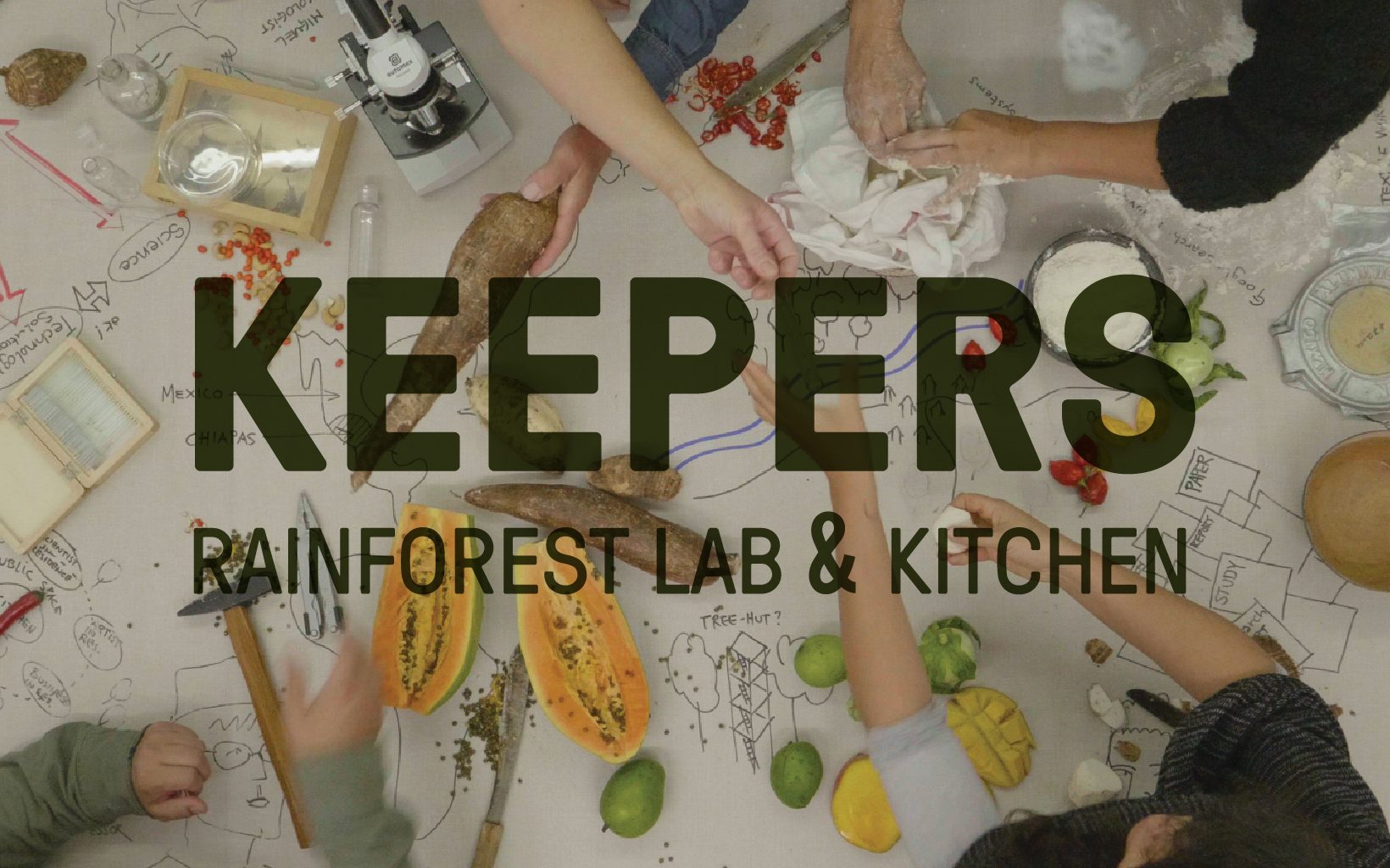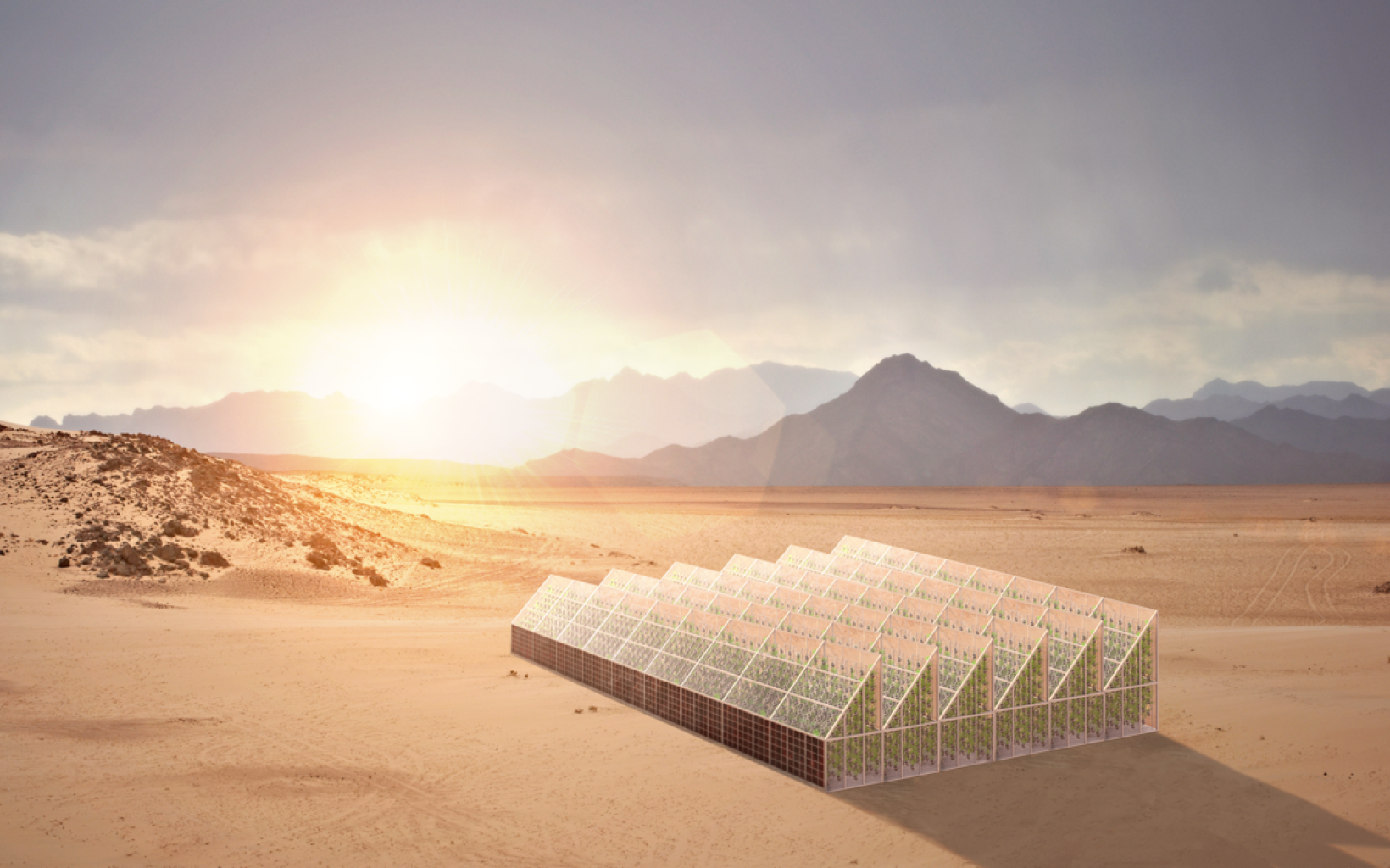- Embedded metal wire in the walls is absolutely low tech But still it is higher tech than making use of any fire tech - Reflecting solar energy back into space by making use of reflecting profile siding
Long Description
This project is a combined solution for warming houses interior in the cool season and cooling houses and their surrounding in the warm season by reflecting sunlight. Both can be implemented separately or together.
Interior warming
The classical approach for warming houses is to warm the air that is present within them. Historically this is achieved by the making of fire in a heating element or stove. The making of fire goes back to the beginning of civilization itself. Man makes fire, man survives.
The by means of fire warmed up air, on its turn, warm up the walls and floors. This will go on until the differences of temperature level out. The second law of thermo dynamics. This is very inefficient, for air is an insulator and the stone of the walls act like a warmth accumulator. It is like trying to blow a cup of tea, that turned cold, warm again.
A far better approach is to warm the walls and the floors directly. Underfloor heating was a good step in the right direction by heating the floor itself but very costly to implement. By making fire that heats up water that is pumped around through embedded tubes in the floor is still very impractical, costly and sensitive to malfunction.
By embedding a metal heating wire directly into the walls the warming of the buildings material is direct. The combined surfaces and mass of the walls are far greater than that of the floor. This makes the warming capacity also far greater. In this way tens of thousands of kilograms of wall warm just a few hundred kilograms of air that is present in the building. The result: the temperature of the walls and floor are the same as the desired temperature of the air in the building. About 18° to 20° C.
Necessary ventilation of the building will result in just a little energy loss. This is exact the amount of energy that has to be applied to the heating wire again. By using solar panels for warming the walls in the daytime the system is sustainable. The walls storing capacity for warmth will last through the night. Also in daytime stored energy in a battery can be added to the system, but this will probably not be necessary.
External cooling
By making use of heavy or so called “double brick walls” with a thick external insulation layer we don’t have to make use of classical “cavity walls” in the buildings construction. A building build like this is self sufficient. It will be more cost effective to build and environmental friendly at the same time. Furthermore, the profile of the siding of the external insulation package causes that the main part of the solar energy that falls on the walls surface, reflects back into space.
Finally
The 250 words given to discribe a project like this undoable. So I more than doubled it. Sorry for this. I hope you can still make the effort to read and understand our project.
If our entry is elected to become a winning project, we will invest the price award in more research and expansion of our existing network. Partners and organizations like the Technical University (TU) Eindhoven (Energy Centre Netherlands), Brainport Development Eindhoven, VolkerWessels and Stam & De Koning (building companies) are interested to realize a pilot. Preferably located at Strijp-S Eindhoven.







Share on social media.
Facebook
Twitter
LinkedIn
Mail